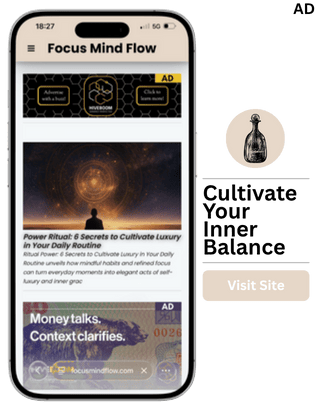Audience Segmentation: Enhancing Marketing Precision and Engagement
In the era of personalized marketing, reaching the right audience with the right message has become essential. Audience segmentation is a strategy that divides a broader market into smaller, more specific groups based on shared characteristics, behaviors, or needs. By understanding these segments, marketers can create tailored campaigns that resonate, drive engagement, and maximize return on investment.
Understanding Audience Segmentation
Audience segmentation involves dividing potential or existing customers into distinct groups according to criteria such as demographics, psychographics, behavior, geographic location, or purchase history. The goal is to deliver marketing messages that align with the unique needs, preferences, and motivations of each segment.
As highlighted by Forbes.com, brands that implement effective audience segmentation strategies see higher engagement, improved conversion rates, and enhanced customer loyalty. Tailoring campaigns based on segmentation ensures that messaging is relevant, timely, and impactful, reducing wasted marketing spend.
Types of Audience Segmentation
Marketers typically use several approaches to segment their audience:
Demographic Segmentation: Based on age, gender, income, education, or occupation.
Geographic Segmentation: Tailoring campaigns for specific regions, cities, or countries.
Behavioral Segmentation: Analyzing purchasing behavior, product usage, or brand interactions.
Psychographic Segmentation: Considering lifestyle, values, interests, and personality traits.
Technographic Segmentation: Understanding how customers interact with digital platforms, devices, and technology.
Each approach allows marketers to refine messaging, select appropriate channels, and predict responses more accurately. Platforms like Businessforumhub.com offer tools and insights to help businesses implement and manage audience segmentation strategies effectively.
Benefits of Audience Segmentation
Implementing audience segmentation provides several key advantages:
Enhanced Personalization: Marketing messages can address the specific needs of each group, increasing relevance.
Improved ROI: Focused campaigns reduce wasted spend and drive higher conversion rates.
Better Customer Insights: Segmentation helps identify patterns in behavior, preferences, and needs.
Competitive Advantage: Understanding niche segments allows brands to differentiate themselves and meet unmet market demands.
Stronger Customer Loyalty: Personalized experiences foster trust and long-term engagement.
Implementing Effective Audience Segmentation
Creating actionable segments requires a combination of data, analytics, and strategic insight:
Collect Comprehensive Data: Use CRM systems, social media analytics, and market research to gather detailed customer information.
Identify Key Variables: Determine which demographic, behavioral, or psychographic factors are most relevant for your goals.
Build Personas: Develop detailed customer personas representing each segment to guide messaging and campaign design.
Test and Refine: Continuously evaluate segment performance and adjust campaigns to improve outcomes.
Insights from Focusmindflow.com emphasize the importance of integrating behavioral and psychographic data to capture the deeper motivations behind customer actions, enabling more precise targeting.
Case Studies of Successful Audience Segmentation
Numerous brands have leveraged audience segmentation to drive significant results. For example, e-commerce platforms that segment customers by purchase behavior can recommend relevant products, increasing average order value and repeat purchases. Similarly, travel companies use geographic and behavioral segmentation to promote location-specific packages and seasonal offers, yielding higher engagement and bookings.
Reports from Forbes.com indicate that companies using multi-dimensional segmentation consistently outperform competitors in campaign efficiency and customer satisfaction. Integrating segmentation with digital marketing tools enables real-time personalization, dynamic content delivery, and cross-channel coordination.
Challenges in Audience Segmentation
While the benefits are substantial, marketers must navigate potential challenges:
Data Quality and Privacy: Accurate segmentation depends on reliable data and compliance with privacy regulations.
Over-Segmentation: Creating too many small segments can complicate campaigns and increase costs.
Dynamic Markets: Customer behavior and preferences evolve, requiring regular updates to segmentation models.
Integration Across Channels: Maintaining consistent messaging across multiple touchpoints can be challenging.
Effective segmentation strategies balance granularity with manageability, ensuring actionable insights without overcomplicating marketing efforts.
Future Trends in Audience Segmentation
The field of audience segmentation continues to evolve with technology and market dynamics:
AI and Machine Learning: Algorithms can analyze vast datasets, identifying patterns and predictive segments in real time.
Hyper-Personalization: Advanced segmentation enables one-to-one marketing tailored to individual behaviors and preferences.
Omni-Channel Integration: Coordinated segmentation across digital, social, and physical channels ensures consistent experiences.
Behavioral and Emotional Insights: Incorporating psychographic and emotional factors enhances relevance and engagement.
Marketers who embrace these trends are better equipped to deliver meaningful experiences, increase loyalty, and achieve measurable business outcomes.
Conclusion
In today’s competitive landscape, audience segmentation is essential for delivering precise, impactful marketing campaigns. By understanding the unique characteristics and needs of different customer groups, marketers can optimize messaging, improve ROI, and foster long-term loyalty.
Leveraging insights and tools from Businessforumhub.com, studying industry practices highlighted by Forbes.com, and integrating behavioral strategies suggested by Focusmindflow.com, brands can create a sophisticated segmentation framework.
Ultimately, audience segmentation is not just a marketing tactic—it is a strategic approach to understanding and engaging customers in a way that drives measurable growth, competitive advantage, and lasting relationships.
Simple Entrepreneurship

Strategic Partnerships: The Hidden Power Behind Business Growth and Lasting Networks
Strategic Partnerships explores how collaboration, trust, and shared vision create strong business growth and redefine networking in the modern economy.

Brand Authenticity: The New Currency of Modern Marketing
Brand Authenticity explores how genuine storytelling, trust, and transparency build lasting relationships and drive success in modern marketing.

Sustainable Investing: Building Wealth with Purpose and Long-Term Impact
Sustainable Investing explores how conscious investors combine profitability with social and environmental responsibility to shape a better financial future.

Adaptive Leadership: Guiding Entrepreneurs Through Constant Change
Adaptive Leadership explores how entrepreneurs can navigate uncertainty, motivate teams, and turn change into strategic opportunity in a fast-evolving world.

Collaborative Mindset: Redefining the Power of Modern Networking
Collaborative Mindset explores how cooperation, shared growth, and mutual trust redefine modern networking and create stronger professional communities.

Emotional Branding: The Secret Language of Modern Marketing
Emotional Branding reveals how powerful feelings shape brand loyalty, influence consumer trust, and build authentic long-term connections in modern marketing.













